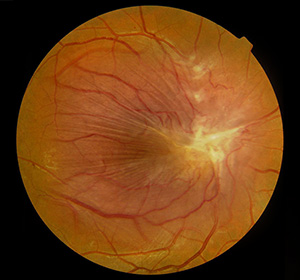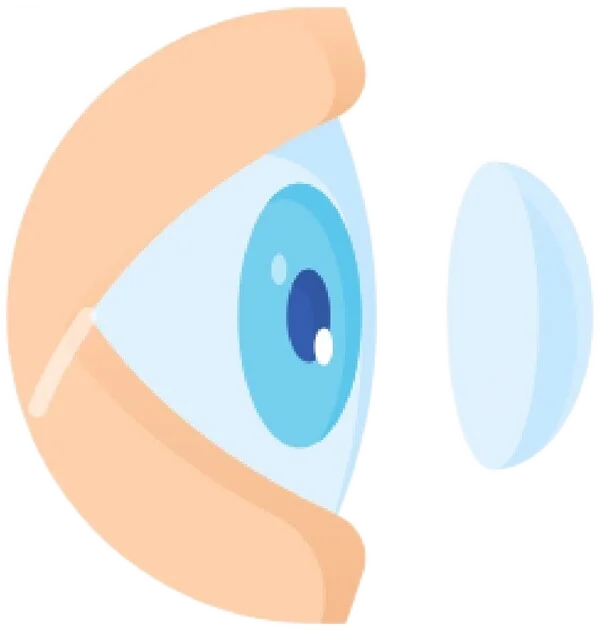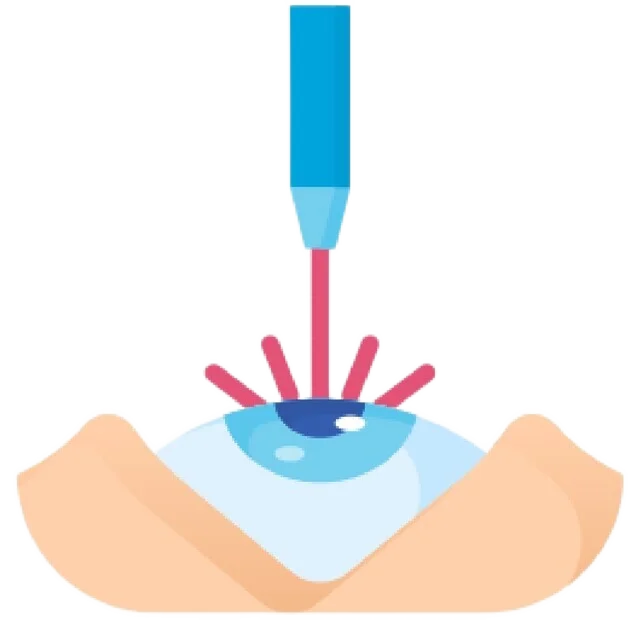
Introduction
An epiretinal membrane, also known as macular pucker or cellophane maculopathy, is a thin layer of fibrous tissue that forms over the macula — the central part of the retina responsible for sharp, detailed vision. This membrane can cause the macula to wrinkle, leading to blurred or distorted central vision, while peripheral vision typically remains unaffected.
Epiretinal membranes most commonly develop as part of the natural ageing process, when the gel-like vitreous inside the eye shrinks and pulls away from the retina, causing cells to settle on the macula and form the membrane. In some cases, it may develop following eye injuries, retinal detachment, inflammation, or other eye conditions.
While many cases cause little to no vision problems, some membranes thicken and distort the macula over time, requiring medical attention to preserve central vision.
Causes and Risk Factors of Epiretinal Membrane
What Causes Epiretinal Membrane?
Epiretinal membranes form when cells and fibrous tissue proliferate on the surface of the macula, causing it to wrinkle and distort central vision. This process often occurs due to natural ageing changes in the eye but can also be triggered by other factors.
Key causes and risk factors include:
- Ageing
The most common cause, as the vitreous gel shrinks and pulls away from the retina, releasing cells that form the membrane. - Previous retinal detachment or surgery
Trauma or surgery to the retina can stimulate membrane formation. - Eye inflammation or vascular abnormalities
Inflammatory eye diseases or abnormal blood vessels may contribute to membrane development. - Eye trauma
Injuries to the eye can increase the risk. - Other retinal conditions
Conditions such as diabetic retinopathy or vein occlusions may be associated with epiretinal membranes.
Understanding these causes can help identify individuals at risk and guide monitoring and treatment decisions.
Types of Epiretinal Membrane
The Different Types of Epiretinal Membrane
Epiretinal membranes vary based on their cause and severity, which helps guide treatment decisions.
Idiopathic Epiretinal Membrane
- Description:
Develops spontaneously without an identifiable cause, often related to the natural ageing process. - Who it affects:
Most common in adults over 50 years old. - Speed of progression:
Usually slow and may remain stable for years without significant vision changes.
Secondary Epiretinal Membrane
- Description:
Results from other eye conditions such as retinal detachment, trauma, inflammation, or vascular diseases. - Who it affects:
Individuals with a history of eye injury, surgery, or retinal diseases. - Speed of progression:
Can progress more rapidly than idiopathic types and may cause more significant vision distortion.
Early Signs & Symptoms
Common Symptoms of Epiretinal Membrane
Recognising the early symptoms of an epiretinal membrane can help patients seek timely evaluation and management. While some cases cause minimal or no vision changes initially, progressive membranes may lead to noticeable symptoms affecting daily activities.
- Blurred central vision
Vision may become fuzzy or out of focus, especially when looking straight ahead. - Distorted or wavy vision (metamorphopsia)
Straight lines may appear bent or warped, a hallmark symptom of macular wrinkling. - Difficulty reading or recognising faces
Fine details may become harder to see, impacting daily tasks. - Double vision in one eye (monocular diplopia)
Some patients notice overlapping or ghost images in the affected eye. - No pain or redness
The condition is usually painless and does not cause eye irritation.
Diagnosis and Treatment of Epiretinal Membrane
Epiretinal membrane is diagnosed through a comprehensive eye exam, including pupil dilation and use of imaging tests like optical coherence tomography (OCT), which provides detailed cross-sectional images of the retina and membrane. Mild cases with minimal symptoms often require only observation. When vision is significantly affected, surgical removal through a vitrectomy is the primary treatment option. This procedure involves carefully peeling the membrane off the retina to restore clearer vision and reduce distortion.
Why Timely Diagnosis Matters
Early diagnosis of an epiretinal membrane is essential to monitor vision changes and prevent severe distortion of central vision. Prompt detection allows for timely management, which can preserve vision and improve quality of life.
Timely diagnosis allows your ophthalmologist to:
- Identify the presence and severity of the epiretinal membrane accurately
- Monitor progression and determine the optimal timing for treatment
- Prevent worsening of vision distortion by intervening early
- Recommend surgery before vision is significantly impaired
- Preserve central vision and maintain daily visual function
Addressing epiretinal membrane early improves outcomes and helps maintain the best possible vision.
Continue Learning About Other Eye Conditions
Other Eye Conditions
The eyes are the most complex sensory organ in our bodies. The eyes provide vision by recording images of our surroundings that the brain will interpret. Although the eye measures only about an inch...
Uveitis and Ocular Inflammation
Ocular inflammation is swelling and inflammation of the eye tissue. The part of the eye that is commonly affected is the middle layer of the eye known as the uvea.
Worried About Your Vision?
Schedule a consultation with Mr. Mo Majid to evaluate your eye health.
Quick Answers About Epiretinal Membrane
What causes an epiretinal membrane to form?
It often develops as part of ageing, but can also happen after eye surgery, injury, or inflammation.
How will I know if I have an epiretinal membrane?
You might notice blurry or wavy central vision, or difficulty seeing fine details like faces or reading small print.
Can an epiretinal membrane affect both eyes?
It’s more common in one eye, but sometimes it can develop in both, especially if caused by systemic eye conditions.







